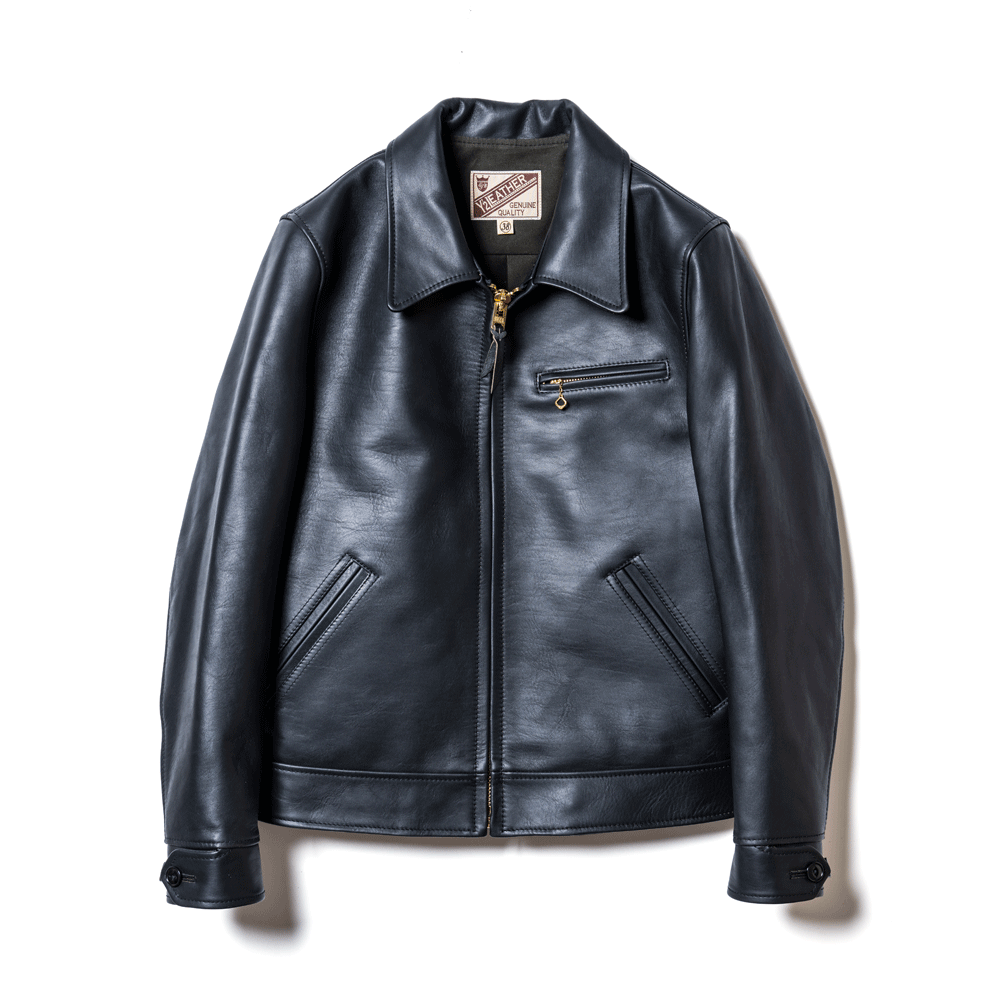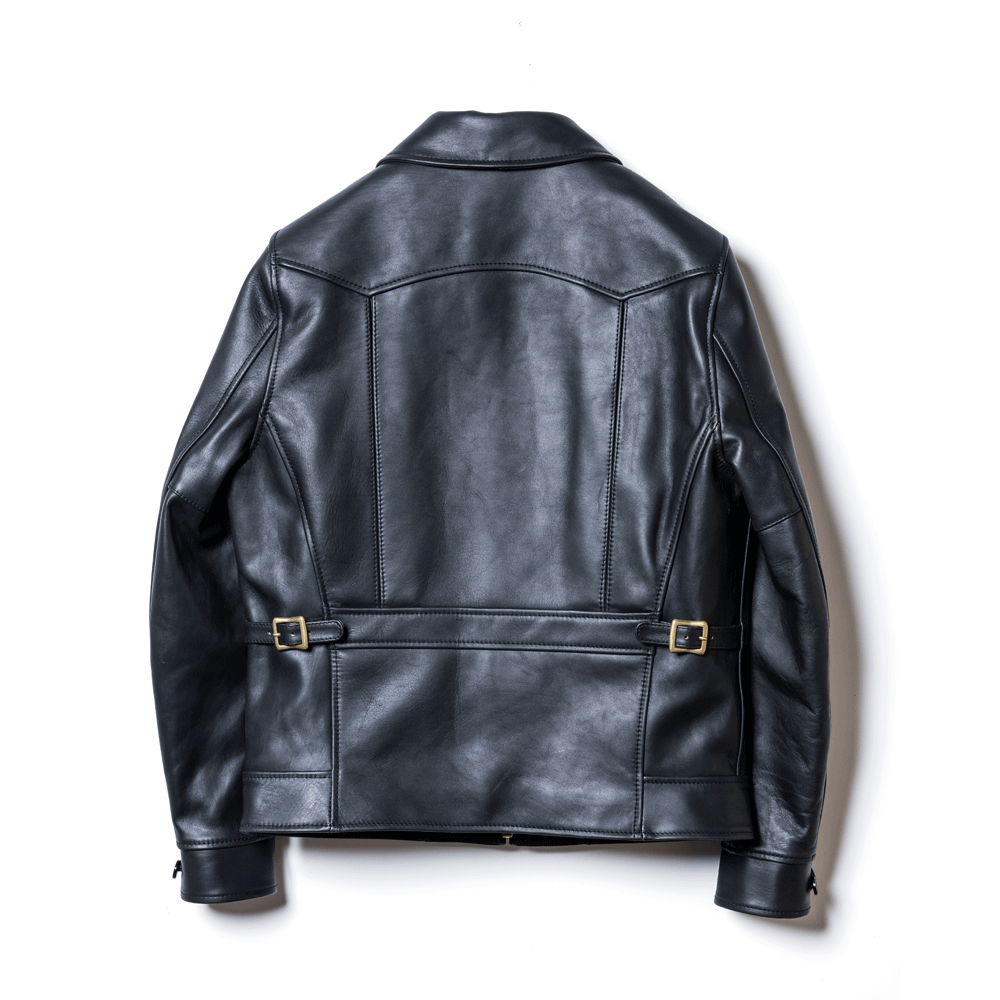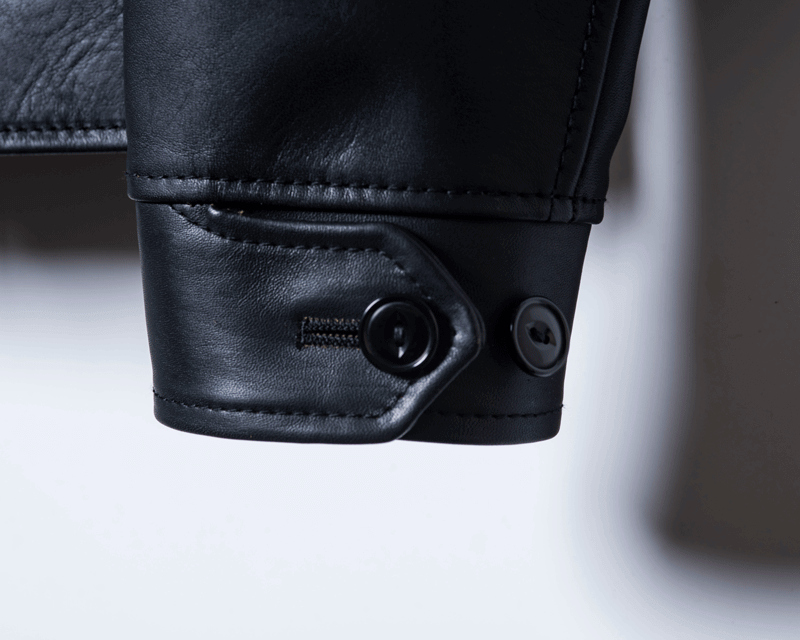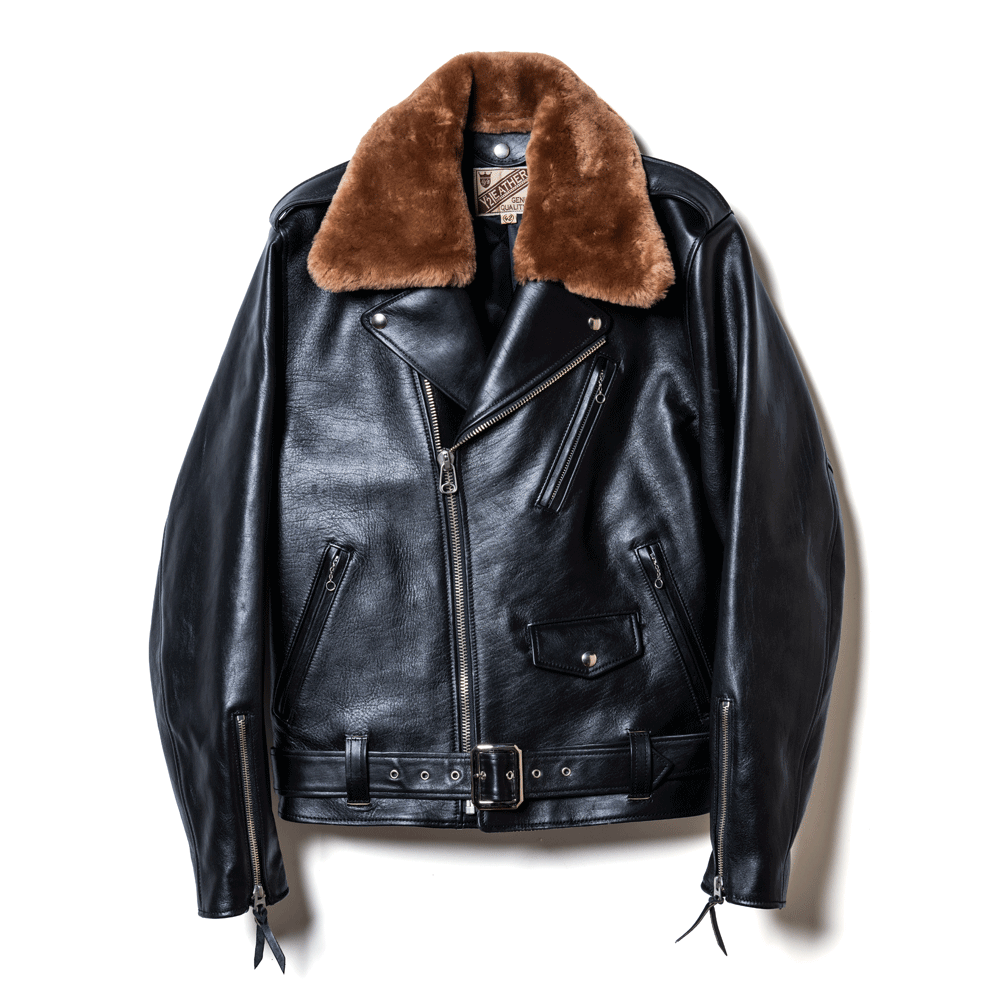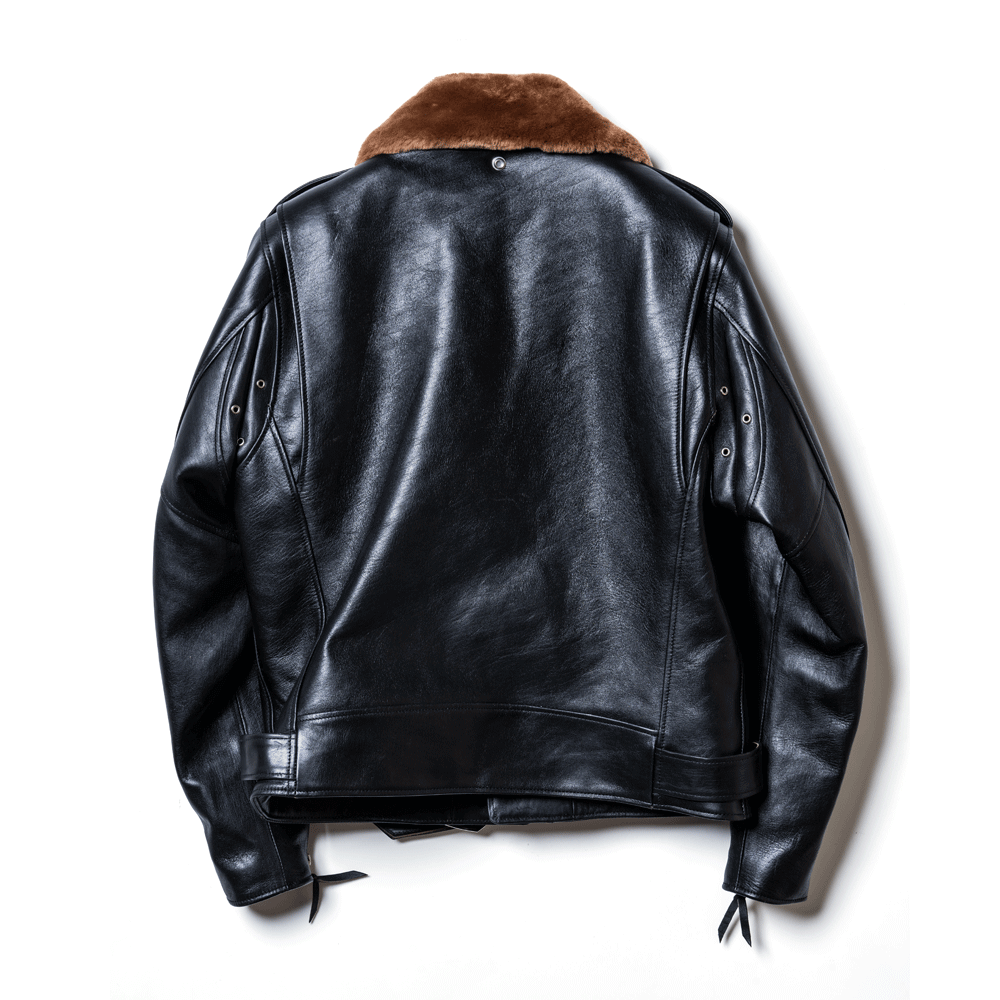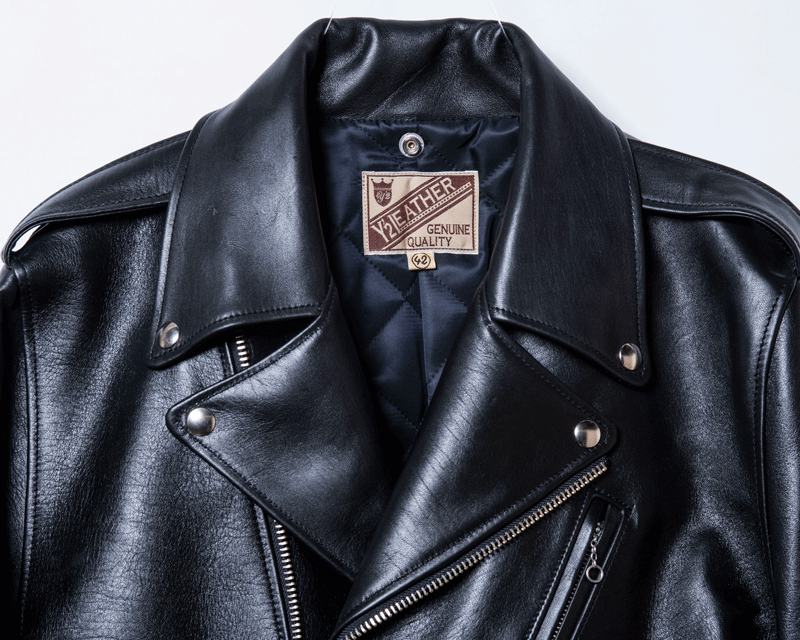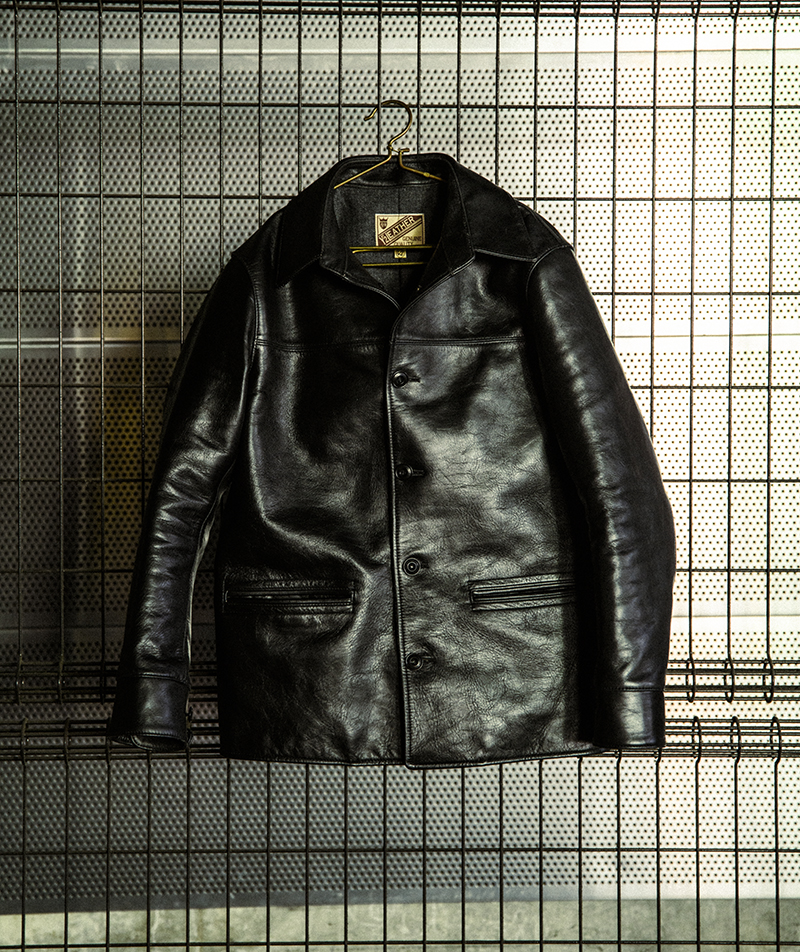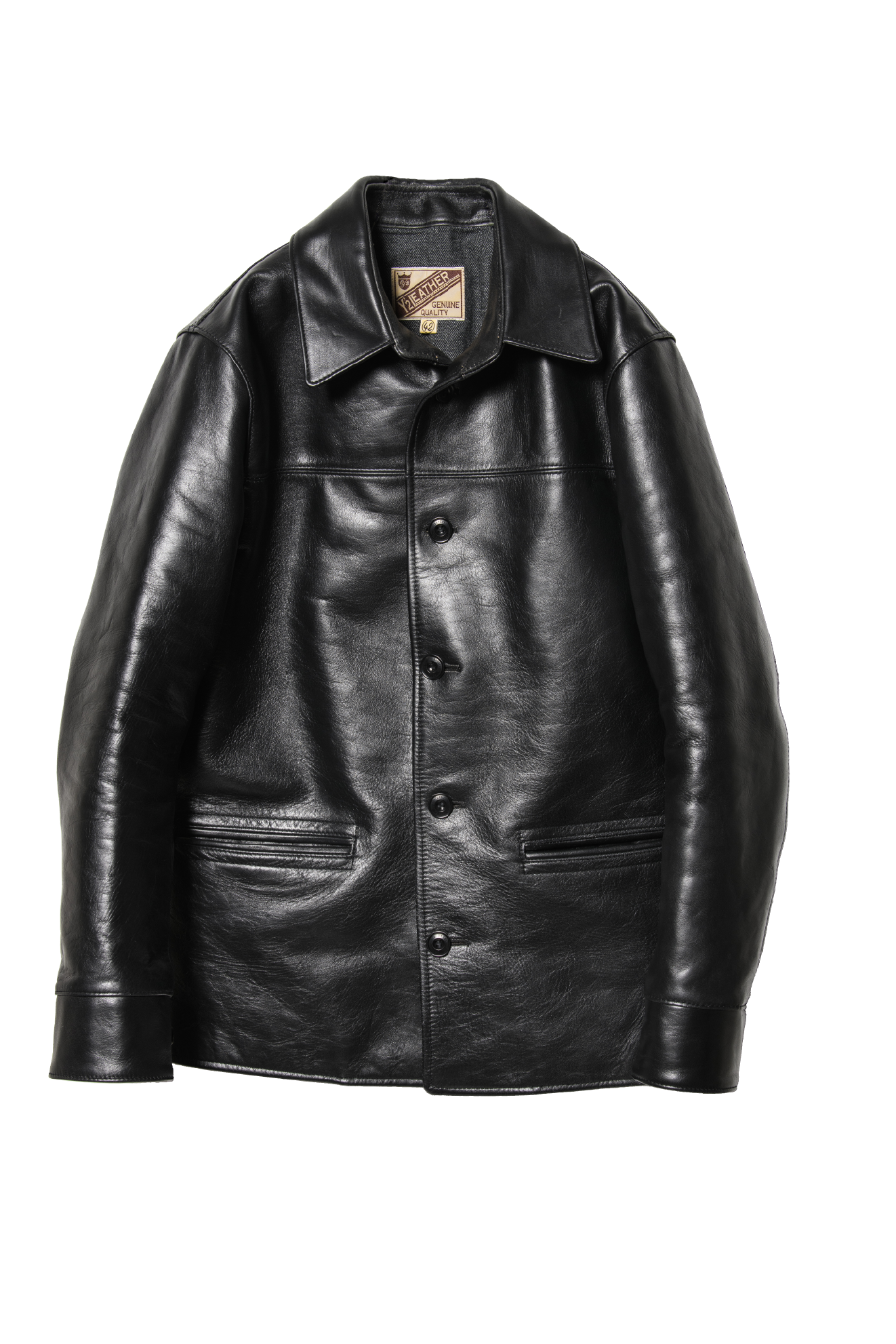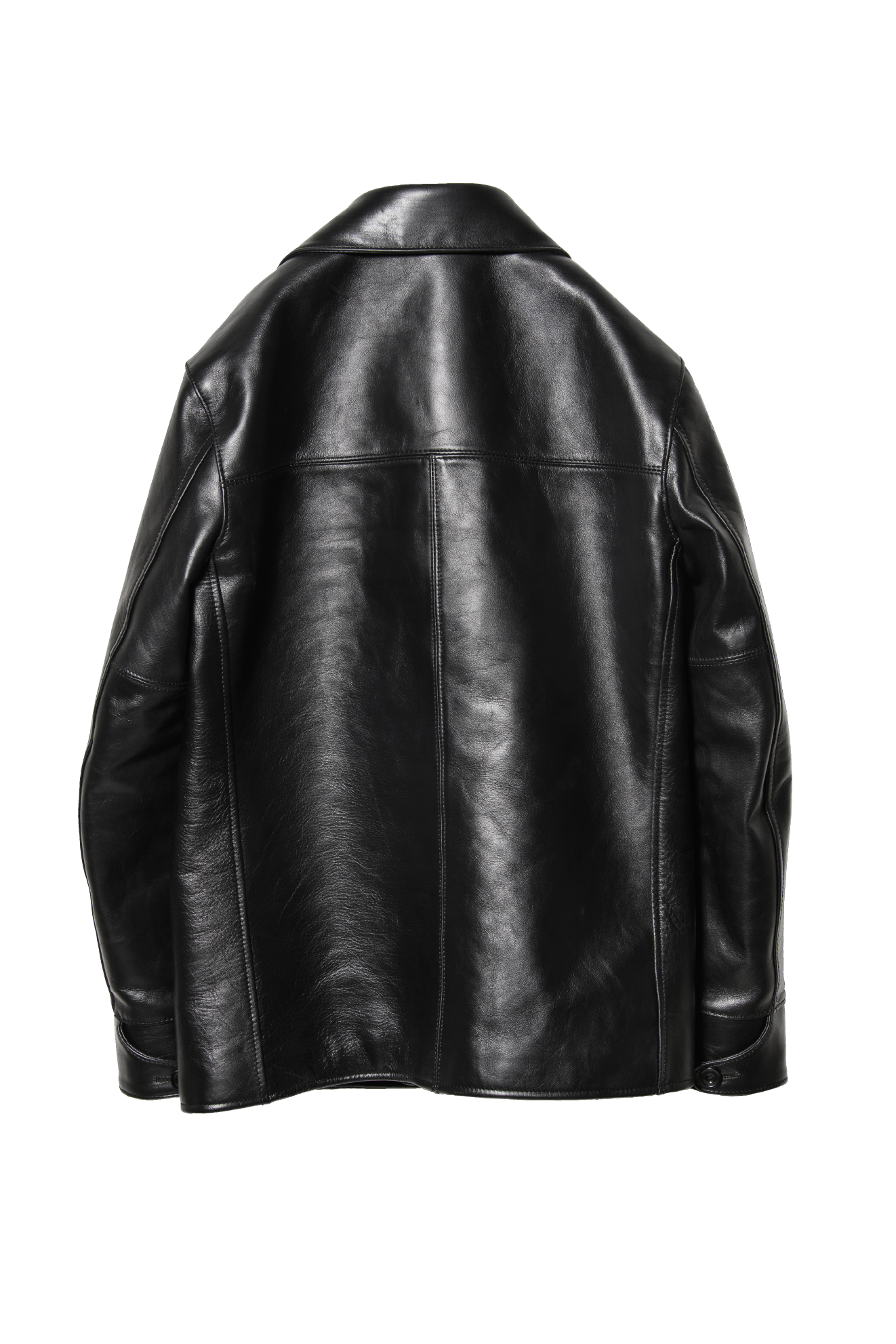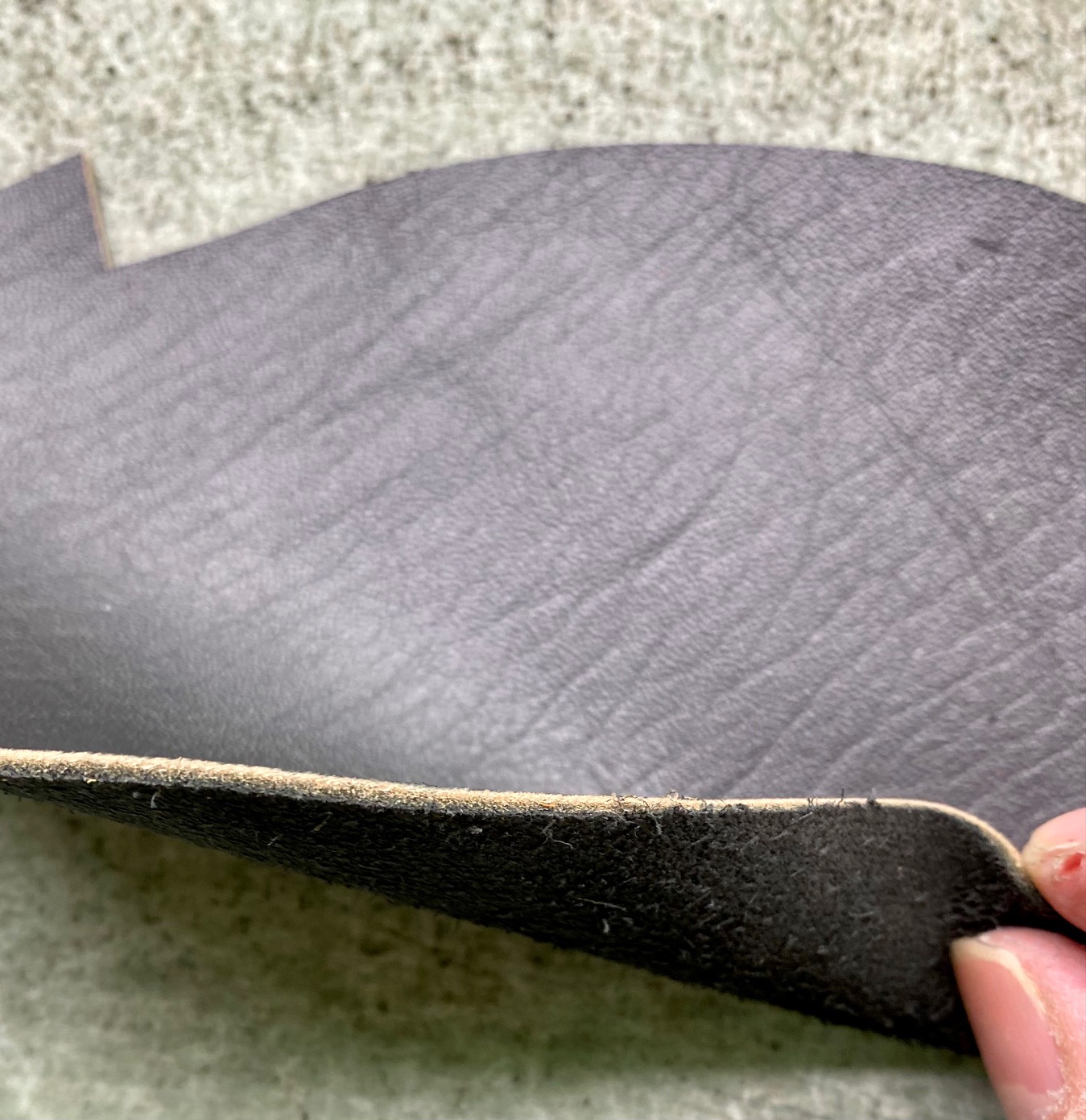2023.09.01
SUMI DYED HORSE
In this issue, we would like to explain about Sumikuro Horse.
We started "Indigo Horse" and "Kakishibu Horse" with the idea of "expressing the wonderful technique representing Japan in leather jackets.
We have received many orders for both from Japan and overseas.
We wanted to express the uniquely Japanese black, or "jet black," like indigo and kakishibu, in leather jackets, so we started researching dyeing leather with sumi ink with a tanner a few years ago.
Last year, we succeeded in commercializing "Sumikuro Horse".
We started by selecting sumi ink, narrowing our focus to materials from Nara and Mie prefectures, which have been closely related to sumi ink since ancient times, and investigated the characteristics, advantages, and disadvantages of each.
We decided to use Nara sumi ink, which has been handed down for 1,400 years.
Nara sumi is designated as a traditional craft, and is made by burning rapeseed, sesame, and paulownia oils.
The production process of Nara sumi requires the delicate skills of sumi craftsmen, so there are few operations that can be mechanized, and the work is still done by hand.
Now that we have found such wonderful sumi ink, it is time to start dyeing.
Before dyeing, the leather is first tanned with full vegetable tannin.
After the core is saddled, the silver and suede surfaces are dyed with sumi ink, which is a very difficult process.
From the second photo, you can see that only the core is not dyed.
If too much dye is used, the inner core will be dyed black.
It is very difficult to adjust the amount of dye.
As for the leather blending, the particles of sumi ink are coarser than those of ordinary dyes, and the silver surface of horsehide is coarser than that of cowhide, so we had to be very careful in blending the leather.
However, the original skin of horsehide is soft, so when it is carefully blended, the sumi ink penetrates into the silver layer more beautifully.
The Sumikuro horse is finished through such a process.
When worn and the leather is peeled off, the color is lighter than brown, so you may be concerned about the contrast.
However, since it is a gnome leather, the color will become darker when it is oiled or baked.
I would like to end the explanation here, but there is one more step to the process.
To bring out the texture of the finished leather, a "milling process" is applied.
To explain it simply, it is like mulling the leather.
The leather is well blended from the beginning, and the silver surface easily shows movement.
The image is like a saddle that has been worn out from the jet black, and it gradually ages to a brownish-brown color.
This "sumi-black" cannot be experienced with ordinary black.
Please experience it for yourself.

